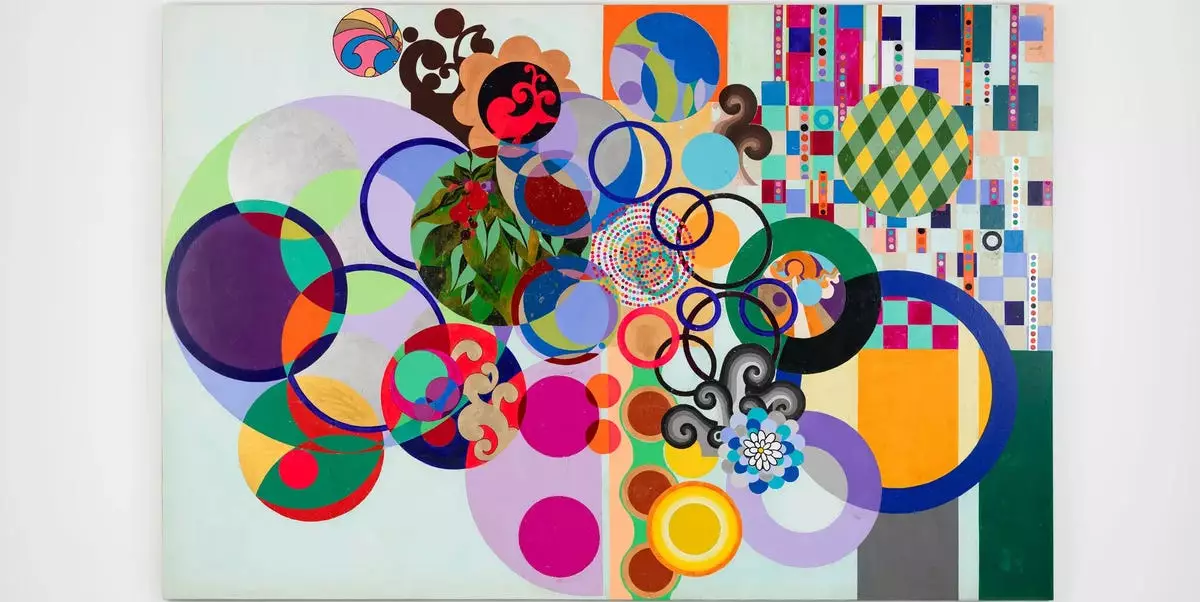Art Basel Miami Beach is not just a hub for visual art; it serves as a dynamic platform that intertwines fashion, culture, and community engagement. The spirit of innovation and creativity transcends traditional art forms, showcasing diverse artistic disciplines and highlighting the multifaceted relationships between clothing, art, and identity. This year’s edition set the stage for a captivating exploration of these themes, demonstrating how art continues to intersect with fashion in engaging ways.
The entrance to Art Basel Miami Beach is nothing short of a spectacle, particularly with the impact of Camille Miceli’s design for Pucci. The entrance features a bold cacophony of swirling colors that prepares visitors for the visual feast they are about to encounter. This striking aesthetic not only signifies a transition into the vibrant art fair but also encourages a moment of introspection—how the art we consume impacts our perception of self and collective identity. The community-driven elements present in the design resonate deeply, inviting guests to strut rather than merely walk, reflecting the fluidity of self-expression that art embodies.
At NADA Miami, the work of Polish-born artist Łukasz Stokłosa provides a thoughtful meditation on fashion’s intersection with identity. By deconstructing the vintage Balenciaga dress, Stokłosa separates the garment’s exquisite craftsmanship from its physicality, suggesting that clothing can symbolize a person’s journey and self-expression beyond mere aesthetics. This portrayal sparks dialogue about the emotional resonance of clothing—can a piece of fashion become a reflective narrative of the woman who once wore it? Such questions invite visitors to engage deeply with the stories behind the fabric, encouraging them to see beyond the surface into the profound emotional worlds that fashion can encapsulate.
Cartier’s exhibition during Miami Art Week is not just a showcase of timepieces but an exploration of the rich history of the brand’s Trinity rings. This collection bridges artistic innovation with Parisian intricacy, illustrating the harmony between fashion and art that has fueled creativity for decades. Curated presentations featuring iconic pieces from different eras are enhanced by modern interactive components, thus inviting attendees to create connections with the revered craftsmanship.
In a similar vein, artist Lewis Kemmenoe’s collaboration with Fendi stands at the crossroads of fashion and furniture design. His creations, inspired by Roman craftsmanship and fairy-tale aesthetics, evoke a sense of nostalgia while reinventing contemporary concepts of luxury. Such partnerships highlight the fluid boundaries that exist between high fashion and fine art, celebrating the idea that they can coexist harmoniously.
Miami’s Design District is becoming a canvas of its own with initiatives like “lot galleries.” These unconventional art spaces utilize public areas to showcase large-scale works by emerging artists. The Philadelphia-born Corydon Cowansage’s installation, presented by Gucci, is a perfect example of using public art to engage communities directly. This mural not only beautifies the urban landscape but also instills a sense of pride and connection for locals, fostering an appreciation for contemporary artistic forms.
NADA presents compelling narratives through various artists such as Nefeli Papadimouli and Bre Andy, who emphasize themes of transformation, belonging, and personal journey. Their works create intimate spaces where audience members can navigate their identities through observation. This alignment of personal experience with artistic exploration reveals how contemporary art and fashion can function as powerful vehicles for social commentary and community dialogue.
Art Basel Miami Beach assembles a rich tapestry of cultural backgrounds represented by artists such as Beatriz Milhazes, who blends traditional Brazilian motifs with modernist principles. Her work embodies the core ideals of Antropofagia—a movement that champions the fusion of cultural identities and celebrates the beauty of diversity within art.
Esther Mahlangu’s striking mural, “Ukuthula Makube Nawe”, stands as a testament to the significance of history within art. By incorporating traditional tribal symbols, she creates a bridge between past and present, encouraging audiences to appreciate the depth of cultural narratives that influence contemporary perspectives.
This year’s Art Basel remarkably illustrates how fashion and art serve as vessels for broader discussions regarding identity, heritage, and community. Each artist and designer create an invitation for spectators to lose themselves in the art, reflecting on its place within their own lives. As Miami continues to be a vital hub for cultural dialogue, the merging of these dynamic elements promises an exciting future for artistic expression and community engagement.

